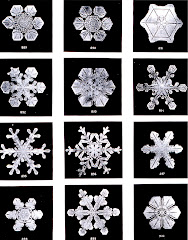Jared Schickling
The Common “Me”: 12 Theses on Gray’s Curious Pronoun in the “Elegy Written in a Country Churchyard”
Thesis 12: sophisticated towns of wealth and wits fashioning the rude countries of healthy air. They have few voices of their own, or where they appear to have one, it is actually this author whom, in the common diction of patronage, we are hearing. Developing industry and middling class desire for credit and luxury pressure rural areas over labor and production. As national English identity crystallizes into something urban, the peasant’s chance of an authentic, literary voice seems even less likely than before. Common. In this context, written around 1750, Gray’s romantic “Elegy Written in a Country Churchyard,” fifty years before Wordsworth’s “selection of language really used by men,” 1 explains that experience in ways that mourn its categorical nonexistence.
Sandro Jung writes of the poem’s “lyric subjectivity”:
[It] locates the speaker in the dim twilight of a darkening landscape. The sound of the curfew [in the opening stanza, common] announces the reflective and melancholy mood the churchyard inspires and “leaves the world to darkness and to me.” The linking of “darkness” with “me” is expressive of the change apparently to take place in man’s existence. 2
Thesis 11: forgoing adequate surplus means non-market oriented cropland and pasture hinder progress, manufacture, the emergence of markets. Left to his own devices the common stock interbreeds and thus cannot be improved while disease spreads rapidly and crops suffer where animals graze freely. Revised enclosure laws annex communal property, fence it to pieces, intensify private accumulations and, of course, consolidate genomes, while poor law revisions create workhouse incarcerations for rural labor’s aristocratic debt whose lifeblood, like the feudal landscape’s perceived obsolescence, is drying up, or merely changing shape. Common. The modern city grows.
But the change “in man’s existence” was not limited to economic restructuring. By this time the scientific base of its enlightenment is being questioned—part and parcel to “reason” taking hold—with increasing emphasis placed on another, more creative faculty:
Thesis 10: the capitalist ideal’s reliance on consumers means formerly constricted realms of knowledge and its discourses should be profitably democratized. Made common. Movable type and growing literacy help. G’s concern at the time with the vanity of honors and titles, “frail memorials” 3 bestowed upon select beings:
For thee who, mindful of th’ unhonoured dead,
Dost in these lines their artless tale relate… 4
Insofar as a poem can think itself, here’s an epistle to specific readers inviting identification with a common field hand’s tale, a point of value within Gray’s “Elegy” whose “unhonoured,” and ostensibly forgotten, “artlessness” threatens a “shrine of Luxury and Pride.” 5 It would make something of “thee” its patrons’ stories won’t.
Thesis 9: “these lines,” the poem itself, “dost” codify and enshrine “their artless tale” in the diction, perhaps the idiom, even the speech, of aristocracy—along a queerly reflexive referencing in “their” (someone said postmodern’s always a condition
Some scholars have been anxious to emphasize the (common) lineage and inheritance permeating Gray’s work. For example, in “Thomas Gray, Classical Augustan,” M. H. Griffin writes:
Thomas Gray has always held a peculiar attraction for the classicist. Standing as he does in full possession of the literary legacy of Pope and Dryden, yet with his face turned ever so slightly toward the breaking light of the dawn of Romanticism, he embodies within himself, in an exceptionally clear form, the changing tenor of his times and enables one to see perhaps a little more clearly than anywhere else what the classicism of his age was and the sources whence it sprang. 6
Griffin not only wants to emphasize class sensibility, but as G belongs to the august age of political satire, he also clearly wants an enlightening writer:
8: the “curfew” of “parting day” line 1 is only “slightly” romantic In 1738, without a degree, Gray temporarily quits Peterhouse, some Inner Church—“sleepy, drunken, dull, [common] illiterate Things.” 7 Around 1742, following all the apprenticing and touring and correspondence due the gentle scholar intending to read for the bar, which never happens, his father, a scrivener, dies and, apparently, at twenty-five, Gray pens some of his more widely read verse, like “Hymn to Ignorance,” “Ode on a Distant Prospect of Eton College,” and “Ode to Adversity.” During this time he also begins his only tragedy, the unfinished “Agrippina,” while beginning work on “Elegy Written in a Country Churchyard.” Edmund Gosse writes of the poet’s (common) artistic development:
His language in these earlier odes was not as brilliant as it became later on. He had so steeped his memory in the felicities of the classical poets, and in those of the English poets too, that these early pieces are a mosaic of beauties repeated, adapted or arranged from other sources. This does not, however, militate against Gray’s originality, since the images and phrase have all passed through the fuse of his imagination, and become his own. It is not possible to say what was the form of so much of the Elegy in a Country Churchyard as was written in 1742, for the poet did not complete it for several years, and has left no record of its earlier condition. 8
And of the “Elegy’s” fate: “The [use of the common] heroic quatrain [was] an attempt to render in English the solemn alternation of passion and reserve, the interchange of imploring and desponding tones, that is found in the Latin elegiac.” 9 Griffin emphasizes the “depth and breadth of his reading in the classical poets,” concluding, “it is this reading which influenced his whole outlook on the literary art and his performance therein.” 10
Thesis 7: what G’s own thoughts could have been, especially after Gosse’s polite recognition that classical “images and phrase have all passed through the fuse of his imagination, becoming his own.” La Rue van Hook writes of “the poet’s classical erudition” 11 while dismissing its readers’ access to literary allusions in the “Elegy” common “It seems strange that these references should have been too recondite for educated readers of the time.” 12 G himself must have wondered the same—he’ll make “plaintive remarks with respect to the unintelligibility of his work”: 13
These Odes “The Progress of Poesy” and “The Bard” were published August 8, 1757. The author was at first advised (even by his Friends) to subjoin some few explanatory notes, but had too much respect for the understanding of his Readers to take that liberty. The words of Pindar prefixed to them “Vocal to the Intelligent” were prophetic of their fate: Very few understood them; the multitude of all ranks call’d them unintelligible. 14
Thesis 6: what he, as a discussed artist today, would think of what follows. It’s after he anonymously publishes his “Elegy” in 1751 that he makes these accommodations. “And so the poet sadly and reluctantly annotated his own verses by indicating the source and meaning of his allusions,” killing what unflinching irony. 15 Common.
Thesis 5: read in this departure—seeming principled, the poet does not seem stubborn—a desire to free something—by removing an obstacle, common burden or hindrance—in light of Griffin’s note that “G seems to have worked through his authors more intensively than the ordinary student of literature, and yet he was not a professional scholar in our sense of the term; his point of view remains strictly that of a man of letters.” 16 Various formal elements of his obscure “Elegy” indulge classical antecedents—the pyramidal geometry of the poem’s three stages, for example, from lament through grief through sorrow, then praise of the idealized dead, concluding at questionable figures of consolation and solace—housed, howevermuch “concealed,” in what “common” symbol the day’s “agriculture” affords yet such “breaches” as elaborate syntax (not unique) that undermine the referent (uniquely: “Now fades the glimmering landscape on the sight” 17 ) don’t suggest a “poetic” line shackled to any “intelligence” passing, but something more absurd arriving:
Th’ applause of listening senates to command,
The threats of pain and ruin to despise,
To scatter plenty o’er a smiling land,
And read their hist’ry in a nation’s eyes… 18
footnotes, common accommodations follow the elegy, postmortem There’s more than a hint of religious bliss here, so that Kathleen Matthews’s take on Paterson is useful. In it, William Carlos Williams “creates a local anthropomorphic deity of rock and water and also uses the sound of water over rock as the major metaphor for a living language.” 19 Instead of “water over rock,” Gray speaks “the cool sequestered vale of life” whose inhabitants’ meditative silence, “the noiseless tenor of their way,” 20 “far from the madding crowd’s ignoble strife” 21 becomes the speaker’s apple of “trembling hope” 22 thesis
4 its sources don’t actually exist—the “forgotten” must stay dead, as nothing “shall rouse them from their lowly bed” 23
George Wright’s comparison of Gray to Eliot:
Both the Elegy and Four Quartets are quiet, elegiac poems, set in country places whose landscapes and remoteness from the pressures of urban life encourage in the meagerly characterized speaker-poet a train of melancholy reflections on the relation of the dead to the living, of the past (and other temporal dimensions) to the present, of time to eternity, and himself to his world. Gray’s hamlet and Eliot’s villages are alike masterfully evoked for us by generalizing [common] tableaux, and they serve as places of refuge from an urban world inhabited by people who have lost sight of their purposes and whose pursuits are empty and vain. 24
in the face of monumental shifts in awareness the speaker’s landscape seems to depend not only upon unannotated subjects but also upon this capacity of the uncommon poem
Yet ev’n these bones from insult to protect
Some frail memorial still erected nigh,
With uncouth rhymes and shapeless sculpture decked,
Implores the passing tribute of a sigh. 25
Robert Creeley’s observation seems applicable here: “But it would be truly a fool who presumed any life to be simple consequence, or earned, or understood. It is the pleasure and authority of writing that it invents a life to live in the first place.” 26 For all its commitments to inscribing, in heightened English, the forgotten, buried, no-name labor(s) into actual history, common, one can read Gray’s “Elegy” as perpetrating certain things against this person and the “place” it inhabits. Though in life notoriously underpublished (somehow managing to refuse an offer of England’s poet laureate) and paranoid about his talent, which might be his common gift, he’d seem to Horace Walpole most comfortable in humor. And though his peculiar tastes in “vacation” were gothic, 27 Gray was a common romantic in his classicism. In the poem all instances of person are male, all instances of gendered landscape female—as are all instances of Gray’s concepts, such as “Knowledge” and “her ample page.” 28 The pastoral is a poetic that for most of its time on earth idealizes the peaceful, simple countryside and the folk who toil there in rustic tranquility, living contentedly off ma’s deifiable earth. The pastoral poem often looks to a simpler life in nature, far from more common urban centers, as retreat from the degenerate complications of small cosmopolitan life and society. Gray’s “Elegy” does all of these things, and worse than we understand them.
Thesis 3: he correctly deletes the following stanza from a final draft:
Hark how the sacred Calm, that broods around
Bids ev’ry fierce tumultuous Passion cease
In still small Accents whisp’ring from the Ground
A grateful Earnest of eternal Peace… 29
2: the poem thankfully concludes with the epitaph that reflects upon a common afterlife, naïve “youth” of “humble birth,” “to fortune and to fame unknown”: 30
No farther seek his merits to disclose,
Or draw his frailties from their dread abode,
(There they alike in trembling hope repose)
The bosom of his Father and his God. 31
Memes of rustic innocence, and even gender, aside or, perhaps, intimately involved, Gray’s floral omission and his rather bleak conclusion signal a dwindling belief in idyllic workdays of pastoral ideation: “necropastoral.” Moreover, solace is apparently sought in what sounds like escape from Earth, city or country, and the lament begins at the melancholic end of labor, which elsewhere might be a cause for common celebration:
The curfew tolls the knell of parting day,
The lowing herd wind slowly o’er the lea,
The plowman homeward plods his weary way,
And leaves the world to darkness and to me. 32
Thesis 1: assonance jostles the long, languishing “o”—sound of malaise, mourning, elsewhere the Question or epiphany—“o”—the voice left to contemplate “the world” and “darkness,” the narrative’s authority prods another toward the “way”—“the knell of parting day”—leaving a common graveyard the “tenor” of a “poem”
an aural metaphysics of his plight. In “Love and Loss: An Elegy,” George Haggerty argues that elegy “carves out a space for…desire…as it tries to reinscribe that desire within hegemonic cultural practice,” while loss appears “the most recognizable feature” of that desire. 33 Remembering Gray’s irksome reader, rather than trying to exalt and communicate (and annotate, describe, commonly) the heroic plight of pastoral labor, Gray works with patronizing vintage, his cocksure otherness—“the word was originally perfectly dignified, and habitually used in the most solemn connexions” 34 —aesthetic darkness, lofty confabulations—skirting the subtext of social linguistics in the arable “commons” to mourn someone’s fate, identifying his usual pronoun.
n o t e s
1. 5
2. par. 2
3. line 78
4. 93-4
5. 71
6. 473, emphasis mine
7. The Thomas Gray Archive
8. 7
9. qtd. in van Hook 2
10. 474
11. 1
12. 2
13. 2
14. qtd. in van Hook 2
15. van Hook 2
16. 474
17. line 5
18. 61-4
19. qtd. in Rozelle 113
20. lines 75-6
21. 73
22. 127
23. line 20
24. 228-9
25. 77-80
26. 10
27. see Archive
28. line 49
29. footnote to line 72
30. 118-20
31. 125-8
32. 1-4
33. 388
34. OED
Bibliography
Creeley, Robert. Autobiography. New York: Hanuman Books, 1990.
Gosse, Edmund. “Life and Poems of Gray.” In Gray: Selected Poems. Edited by Edmund Gosse. London: Oxford UP, 1885. 1-27.
Gray, Thomas. “Elegy Written in a Country Churchyard.” In The Broadview Anthology of British Literature, Volume 3: The Restoration and the Eighteenth Century. Edited by Joseph Black et al. Orchard Park, NY: Broadview, 2006. 607-09.
Griffin, M. H. “Thomas Gray, Classical Augustan.” The Classical Journal 36.8 (1941): 473-82.
Jung, Sandro. “Elegy Written in a Country Church-Yard.” 2002. The Literary Encyclopedia: http://www.litencyc.com/php/sworks.php?rec=true&UID=5392
Haggerty, George. “Love and Loss: An Elegy.” GLQ: A Journal of Lesbian and Gay Studies 10.3 (2004): 385-405.
Online Etymology Dictionary. Edited by Douglas Harper: http://www.etymonline.com/
Rozelle, Lee. “Ecocritical City: Modernist Reactions to Urban Environments in ‘Miss Lonelyhearts’ and ‘Paterson.’” Twentieth Century Literature 48.1 (2002): 100-115.
The Thomas Gray Archive: A Collaborative Digital Collection. Edited by Alexander Huber. University of Oxford: http://www.thomasgray.org/
Van Hook, La Rue. “New Light on the Classical Scholarship of Thomas Gray.” The American Journal of Philology 57.1 (1936): 1-9.
Wordsworth, William. “Preface to Lyrical Ballads.” In Towards the Open Field: Poets On the Art of Poetry, 1800-1950. Edited by Melissan Kwasny. Middletown, CT: Wesleyan U Press, 2004. 3-26.
Wright, George T. “Eliot Written in a Country Churchyard: The Elegy and Four Quartets.” ELH: A Journal of English Literary History 43.2 (1976): 227-43.
_____
Jared Schickling is the author of t&u& lash your nipples to a post history is gorgeous (BlazeVOX [books], 2011; reviewed here, here, and here), among others. More recent poetry and prose have appeared in Interim, Sous les Pavés, SpringGun, The Associative Press, unarmed, and an essay on poetic practice in Literary Imagination. Edits with Delete Press, eccolinguistics, and Reconfigurations.
_____
RECONFIGURATIONS: A Journal for Poetics & Poetry / Literature & Culture, http://reconfigurations.blogspot.com/, ISSN: 1938-3592, Volume 5 (2011): Disappearance
RECONFIGURATIONS: A Journal for Poetics & Poetry / Literature & Culture, http://reconfigurations.blogspot.com/, ISSN: 1938-3592, Volume 5 (2011): Disappearance











No comments:
Post a Comment